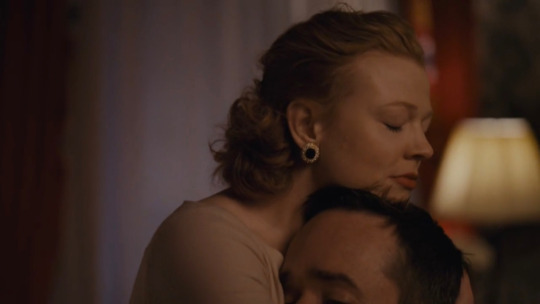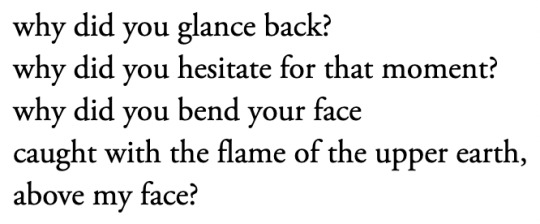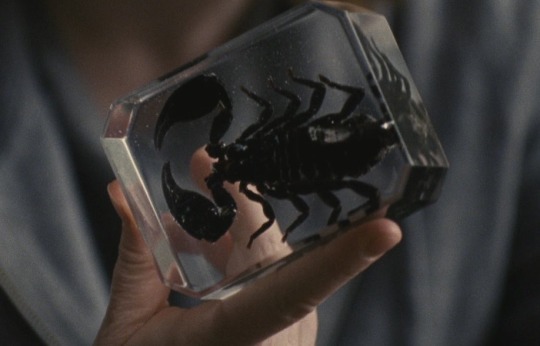#suicide of Dido
Note
Hi, I love your blog! I was wondering, and I only thought of it because of your username and of her melancholic aria, if you knew of any paintings or illustrations related to Purcell's "When I Am Laid In Earth" or even just Dido's death in general? Thank you!😊
I'm so glad that you like my blog! I love Purcell's Dido and Aeneas (it was one of the inspirations for my url). I get "When I Am Laid in Earth" stuck in my head often, but it's too high for me to sing, sadly...
I don't have any specific recommendations for illustrations of Purcell's opera, but I do have some favorite depictions of Dido's death, which are mostly inspired by Vergil’s account in the Aeneid:
My favorite paintings are probably Henry Fuseli's Dido in the collection of the Yale Center for British Art (I like the inclusion of Iris cutting Dido's hair to release her soul) and Giambattista Tiepolo's Death of Dido in the Pushkin Museum of Fine Arts (this one is actually the header on my blog). I also like Joshua Reynolds' Death of Dido, which is in the British Royal Collection, and a work in the Getty Museum that is attributed to Rubens' workshop.
Additionally, my favorite print is an etching by Stefano della Bella after Parmigiano of Dido Killing Herself, which, like the Rubens workshop painting, shows Dido with Aeneas' sword in the moment before the suicide.
I hope that you enjoy some of these works too! As a bonus, my favorite depiction of Dido before her death is Joseph Mallord William Turner's Dido Building Carthage. Jean-Bernard Restout's series of oil sketches for a tapestry design are also good, if not as complete as a finished painting: Dido Sacrificing to Juno in the Metropolitan Museum of Art, three works of Dido and Aeneas in the LACMA collection, and The Death of Dido, which was up for auction by Sotheby’s in 2019.
#dido dicit#ask#answer#oh-come-sweet-death#Thanks for giving me an excuse to look through my old posts!#I really should repost some of these paintings since image quality has improved so much since I started this blog...#Dido#Dido and Aeneas#death of Dido#suicide of Dido#Aeneid#mythology#Henry Fuseli#Giambattista Tiepolo#Joshua Reynolds#Stefano della Bella#Parmigiano#Joseph Mallord William Turner#Jean-Bernard Restout
23 notes
·
View notes
Text







And they both drown...
Sources: Persuasion - Jane Austen, Eurydice - HD, Umbrella Academy)
#succession#shiv roy#tom wombsgans#tomshiv#succession spoilers#Hiiii#never done one of these before#sorry if its shit#the quotes are a bit random but i like them#i wish i knew more gut wrenching female rage poems#i wish i could have included a dido reference#omg the parallels of duty versus love and agency in suicide#and how shiv is pushed on by the ghost of her father#leaving behind tom who was on a path to power#but she has upstaged and undermined him#UGH#and the company is rome of course#web weaving
31 notes
·
View notes
Text
People in my music class are like "I've never heard of people using music to talk about suicide before" like dude wait until you hear about Mothica
#like i had to write a discussion board post about how 'didos last lament' discusses the topic of suicide#and all i can think of is 'forever fifteen'#mothica#snowys talking again
5 notes
·
View notes
Text

From Domina by Guy de la Bédoyère
#the aeneid#roman history#dido#vergil#cw suicide mention#cw sexism mention#I have a few criticisms of this book but this line. Chef’s kiss
5 notes
·
View notes
Text


Silius Italicus, Punica 2.701-7 trans. J.D. Duff
#HES SO HAUNTED AND DIDOCORE <3#saw the verb erro. That’s Dido’s Verb#dare i sayyyyyy fato profugus but make it evil!!!!!!#punica#suicide mention —#beeps
7 notes
·
View notes
Note
Your post on dyslexia is so interesting and informative. I used to teach kids with dyslexia, so wanted to know if you received any services in school. If you did, what seemed to help the most. Thanks! From a fellow spirk fan
I'm trying really hard to keep this short and relevant, but to be blunt, I'm not sure anything helped. Any help I received was usually incidental. We did a ton of things which are supposed to help teachers spot learning difficulties in kids- word searches come to mind (I couldn't do them at all when I was a kid)- but for whatever reason it never got spotted. I was always behind on my maths and concerns were never raised about it. It was super weird, but apparently my primary school had a bad reputation when it came to teaching maths anyway, so I guess it makes sense in retrospect.
I think what would have been most helpful when I was very young was not being traumatized by my teachers when I was 5 (to the point where I was terrified to get a maths question wrong. I'm sure too many people can relate to that).
I can remember two separate teachers calling me stupid when I was 6 (I think one of them called me stupid and another one yelled at me for blurting the (correct) answer out in maths class. (I had my hand up but she wasn't picking me and I could tell from her gaze she was going to pick one of the kids who always answered correctly in class, and I was just excited to finally have a correct answer). It feels so petty to bring it up almost 2 decades later, but idk man, it's also a petty thing to get annoyed at a literal child* for /lh).
*I couldn't even hit her with an “Ummm I am literally neurodivergent and a minor?”, because unfortunately it was 2005 and that phrase hadn't been invented yet.
It occured to me recently that I did receive a couple of instances of extra support in primary school, though for some reason it was only when I was 10 and was about to move up to middle school anyway.
The first instance was a group of 6 of us who were all given extra math tutoring before our SATS exams. After our SATS I was taken out of lessons to have one-on-one maths lessons with a student teacher. This was 13 years ago so I only remember it vaguely, but I think she was scheduled in once a week for about 6 weeks for half an hour at a time, and I'm pretty sure we spent the last 5 weeks finishing off a short story with a friend I'd started in English lessons, being supervised by the teacher the whole time.
I was tested for dyslexia as a 5 year old on my mum's request, but we didn't know I had it until 12 years later when I did another in-school test when I was 17. I've heard people mention this happening to other neurodivergent people, too (especially ADHD and autistic people)
I know when I was first learning to read my teachers provided me with "view-finders" or windowfinders (pieces of cardboard with small windows cut into them) so I could focus on individual words. When I was eventually diagnosed by the learning support at my high school, they did something similar and had me try out various pieces of cellophane to lay over the page so I could read it better.
The ironic thing is, I'd considered going to the learning support room years earlier, when I first got to high school, but I couldn't find it. Which makes sense in retrospect, because I'm not the best with directions, I just find it extremely ironic, because there were regular announcements that "the learning support room is always open. You can find it behind the lifts** on the ground floor", but every time I walked past the lifts, I thought there was a blank wall behind it. Turns out (as I only learned because the learning support teacher met me in music class one day and led me there herself) there's a very narrow corridor beside the lift, and you can only see the doorway once you're inside it.
**(elevators)
TL;DR, I could have been diagnosed with dyslexia much sooner but the teacher I had when I was 5 was hostile, and by the time I'd begun to suspect I had learning difficulties, dyslexia/inattention/executive functioning prevented me from finding my way to get help 🥹 but overall school was okay, the rest of my teachers were supportive! I remember when I was 14 & 15, I really appreciated my chemistry teacher. He used to write with yellow on a dark blue background (and a sans serif font) because he said he'd read that it was easier to read for dyslexic people.
I could rant for days about how the school system in general is broken and learning support is only slapping a bandaid on an industry industry which is built on institutional ableism (and every other ism too), but ultimately as long as kids make it out of school alive, you've done your job as a teacher.
#asks#dyslexia#long post#abuse tw#suicide tw#alluded to but I'll just mention that the suicide of a 16 year old in the year above me made me realize I needed to take it easy in school#there was a day when i was 16 where i broke down crying in the middle of music class#because I realised I had suicidal ideation. we were listening to Dido and Aeneas and When I Am Laid broke me#anyway I didn't mean for this to get so personal#ask to tag#I'm sure i missed a thousand tw's here#school#british education system
6 notes
·
View notes
Text
I think my life would be so much better if dido had stabbed Aeneas rather than herself
#this is regarding me hating my *compulsory* Roman law module#which is so pointless and boring?#I really don’t think I’m ever going to be an ancient Roman jurist but anyways#I have an exam in like 2 weeks that I started revising for today so that’s great#tw suicide#idk if it needed a tw tbh#but better safe than sorry ig#law#law school#Roman law#Rome#dido#aeneas#look I love rome but I seriously couldn’t care less about who would hypothetically own an apple that fell into my neighbours garden
1 note
·
View note
Text


dido tearing her hair out in madness & dido's suicide
in an illustrated copy of the 'eneasroman' by heinrich von veldeke, alsace, c. 1419
source: Heidelberg, UB, Cod. Pal. germ. 403, fol. 32v and 51r
#15th century#eneasroman#heinrich von veldeke#dido#greek mythology#madness#queens#violence#medieval art
580 notes
·
View notes
Text
About Tanit
I recently posted about how people should be looking more into other gods outside of the Greco-Roman pantheons. If you follow me for quite some times, you will also have noted I posted a bunch of loose translation from the French Dictionary of literary myths (which is truly a great reference). Well, I wanted to share with you today a loose translation – well, more of an info-mining at this point – of an article about a goddess that people often ignore the existence of, despite being located right next to Ancient Greece and Rome, and being involved in the history of the Roman Empire. And this goddess is Tanit.
Written by Ildiko Lorinszky, the article is organized in two – at first it takes a look and analysis at the mythological Tanit, at who and what she likely was, how her cult was organized all that. The second part, since it is a Dictionary of LITERARY myths, takes a look at the most prominent and famous depiction of Tanit in French literature – that is to say Flaubert’s famous Salammbô. (If you recalled, a long time ago I posted about how a journalist theorized in an article how Flaubert’s Salammbô was basically an “epic fantasy” novel a la Moorcock or Tolkien long before “fantasy” was even a genre)
Part 1: Tanit in mythology and archeology
Tanit was the patron-goddess of the city of Carthage. Considered to be one of the avatars o the Phoenician goddess Astarte, Tanit’s title, as found on several Punic engravings, was “The Face of Baal” – a qualification very close to how Astarte was called in Sidon and Ugarit “The Name of Baal”. These titles seem to indicate that these two goddesses acted as mediators or intermediaries between humanity and Baal.
Tanit is as such associated with Baal, the vegetation god, but sometimes she is his wife, other times she is simply his paredra (companion/female counterpart). She seems to be the female power accompanying the personification of masculinity that is Baal, and as such their relationship can evoke the one between Isis and Osiris: the youthful sap of the lunar goddess regularly regenerates the power of the god. This “nursing” or “nourishing” function of Tanit seems to have been highlighted by the title she received during the Roman era: the Ops, or the Nutrix, the “Nurse of Saturn”. Goddess of the strengthened earth, Tanit is deeply tied to agrarian rituals: her hierogamy with Baal reproduces in heaven the birth of seeds on earth. Within the sanctuaries of Tanit, men and women devoted to the goddess practiced a sacred prostitution in order to favorize the fecundity of nature. The women tied to the temple were called “nubile girls”, while the men working there were called “dogs” to highlight how completely enslaved they were to the goddess. We know that the prostitutes of both sexes brought important incomes to the temple/
The etymology of Tanit (whose name can also be called Tannit or Tinnit) is obscure. The most probable hypothesis is that the Phoenico-Punic theonym “Tnt” is tied to the verb “tny”, which was used in the Bible to mean “lamenting”, “wailing”, “crying”. According to this interpretation, the “tannît” is originally a “crier”, a “wailer”, and the full name of Tanit means “She who cries before Baal”. As such, the Carthaginian goddess might come from a same tradition as the “Venus lugens”.
According to some mythographers, Tanit (or Astarte) was the supreme goddess of Carthage, and might have been identical to the figures of Dido and Elissa. As in, Dido was in truth the celestial goddess, considered as the founder of the city and its first queen. According to this hypothesis, the suicide of Dido on a pyre was a pure invention of Virgil, who took this motif from various celebrations hosted at Carthage. During these feasts-days, images and depictions of the goddess were burned The word Anna would simply mean “clement”, “mild”, “merciful” – the famous Anna, sister of Dido, is thought to have been another Punic goddess, whose cult was brought from Carthage to Rome, and who there was confused with the roman Anna Perenna, a goddess similar to Venus. Varro claimed that it was not Dido that burned on the pyre, but Anna, and according to this angle, Anna appears as a double of Dido – and like her, she would be another manifestation of the goddess Tanit. Anna’s very name reminds of the name “Nanaia”/”Aine”, which was a title given to Mylitta, yet another manifestation of Tanit.
The sign known as the “sign” or “symbol of Tanit” seems to be a simplified depiction of the goddess with her arms open: it is a triangle (reduced to a trapezoid as the top of the triangle is cut) with an horizontal line at its top, an a disc above the horizontal line. This symbol appears throughout the Punic world on monuments, steles, ceramics and clay figurines.
Part 2: The literary Tanit of Flaubert
Gustave Flaubert’s novel Salammbô is probably where the goddess reappears with the most splendor in literature. While her essence is shown being omnipresent throughout the Punic world, Tanit, as the soul of the city, truly dwells within the town’s sanctuary, which keeps her sacred cloak. The veil of the goddess, desired by many, stolen then regained throughout the plot, plays a key role within the structure of this very enigmatic text, which presents itself as a “veiled narrative”.
The town and its lands are filled with the soul of the “Carthaginian Venus”. The countryside, for example, is filled with an erotic subtext, sometimes seducing, sometimes frightening – reflecting the ambiguity of the goddess. The landscape is all curves, softness, roundness, evoking the shapes of a female body – and the architecture of both the city-buildings and countryside-buildings are described in carnal ways. Within Salammbô, Flaubert describes a world where the spirit and the flesh are intertwined – the female world of Carthage is oppressed by an aura mixing lust with mysticism; and through the erotic nature creeps both a frightening sacred and an attractive morbidity. For death and destruction is coming upon Carthage.
The contradictory nature of the goddess appears as early as the very first scene of the novel, when the gardens of Hamilcar are described. The novel opens on a life-filled landscape: the gardens of the palace are a true Land of Eden, with an abundant vegetation filled with fertility symbols. The plants that are listed are not mere exotic ornaments: they all bear symbolic and mythological connotations. The fig-tree, symbol of abundance and fecundity ; the sycamore, “living body of Hathor”, the tree of the Egyptian moon-goddess ; the grenade, symbol of fertility due to its multiple seeds ; the pine tree, linked to Attis the lover of Cybele ; the cypress, Artemis’ tree ; the lily, which whose perfume was said to be an aphrodisiac ; the vine-grapes and the rose… All those plants are linked to the moon, that the Carthaginian religion associated with Tanit. Most of these symbols, however, have a macabre touch reflecting the dark side of the goddess. The cypress, the “tree of life”, is also a funeral tree linked to the underworld ; the coral is said to be the same red as blood, and was supposedly born from the blood-drops of Medusa ; the lily symbolizes temptation and the unavoidable attraction of the world of the dead ; the fig-tree just like the grenade have a negative side tied to sterility… The flora of this passage, mixing benevolent and malevolent attributes, already depict a world of coexisting and yet opposed principles: fertility cannot exist without sterility, and death is always followed by a renewal. The garden’s description introduces in the text the very cycles of nature, while also bringing up the first signs of the ambivalence that dominates the story.
The same union of opposites is found within the mysterious persona of Tanit. The prayer of Salammbô (which was designed to evoke Lucius’ lamentations to Isis within Apuleius’ Metamorphosis) first describes a benevolent goddess of the moon, who fecundates the world : “How you turn, slowly, supported by the impalpable ether! It polishes itself around you, and it is the movement of your agitation that distributes the winds and the fecund dews. It is as you grow and decrease that the eyes of the cats and the spots of the panthers lengthen or shrink. The wives scream your name in the pains of labor! You inflate the sea-shells! You make the wines boil! […] And all seeds, o goddess, ferment within the dark depths of your humidity.” As a goddess presiding to the process of fermentation, Tanit is also tied to the principle of death – because it is her that makes corpses rot.
The Carthaginian Venus appears sometimes as an hermaphrodite divinity, but with a prevalence and dominance of her feminine aspect. Other times, she appears as just one of two distinct divinity, the female manifestation in couple with a male principle. Tanit synthetizes within her the main aspects of all the great moon-goddesses: Hathor, Ishtar, Isis, Astarte, Anaitis... All are supposed to have an omnipotence when it comes to the vegetal life. Mistress of the elements, Tanit can be linked to the Mother-Earth : for the character of Salammbô, the cloak of the goddess will appear as the veil of nature. The daughter of Hamilcar is linked in a quite mysterious way to Tanit – for she is both a frightened follower of the goddess, and the deity’s incarnation. Described as “pale” and “light” as the moon, she is said to be influenced by the celestial body: in the third chapter, it is explained that Salammbô weakened every time the moon waned, and that while she was languishing during the day, she strengthened herself by nightfall – with an additional mention that she almost died during an eclipse. Flaubert ties together his heroine’s traits with the very name “Salammbô”, which is a reminiscence of the funeral love of Astarte: “Astarte cries for Adonis, an immense grief weighs upon her. She searches. Salmmbô has a vague and mournful love”. According to Michelet’s explanations, “Salambo”, the “love name” of Astarte, is meant to evoke a “mad, dismal and furious flute, which was played during burials”.
As a character embodying Tanit, Salammbô is associated with the two animals that were sacred to the goddess: the holy fishes, and the python snake, also called “the house-spirit”. Upon the “day of the vengeance”, when Mâtho, the scape-goat, is charged with all the crimes of the mercenaries, she appears under the identity of Dercéto, the “fish-woman”. The very detailed costumes of Salammbô contain motifs borrowed to other goddesses that are avatars of Tanit. By using other goddesses, Flaubert widens the range of shapes the lunar goddess can appear with, while also bringing several mythical tales, whose scattered fragments infiltrate themselves within the novel. When she welcomes her father, Salammbô wears around her neck “two small quadrangular plates of gold depicting a woman between two lions ; and her costume reproduced fully the outfit of the goddess”. The goddess depicted here is Cybele, the passionate lover of Attis, the young Phrygian shepherd. This love story that ends in mutilations bears several analogies with the fatal love between Salammbô and the Lybian leader. And the motif of the mutilation is one of the key-images of the novel.
A fish-woman, like Dercéto, Salmmbô is also a dove-woman, reminding of Semiramis ; but more so, she is a snake-woman, linked mysteriously to the python. Before uniting herself with Mâtho (who is identified to Moloch), Salammbô unites herself with the snake that incarnates the lunar goddess in her hermaphroditic shape. It is the python that initiates Salammbô to the mysteries, revealing to Hamilcar’s daughter the unbreakable bond between eroticism and holiness. In the first drafts of the novel, Salammbô was a priestess of Tanit, but in the final story, Flaubert chose to have her father denying her access to the priesthood. So, she rather becomes a priestess under Mathô’s tent: using the zaïmph, she practices a sacred prostitution. The union of Hamilcar’s daughter and of the leader of the mercenaries reproduces the hierogamy of Tanit and Moloch.
Salammbô, confused with Tanit, is also victim of the jealous Rabbet. Obsessed with discovering the face of the goddess hidden under the veil, she joins the ranks of all those female characters who curiosity leads to the transgression of a divine rule (Eve, Pandora, Psyche, Semele). And, in a way, the story of Mathô and Salammbô reproduces this same story: the desire to see, the desire for knowledge, always leads to an ineluctable death.
#tanit#astarte#punic goddess#carthaginian goddess#carthage#baal#flaubert#salammbô#salammbo#french literature#punic mythology#carthaginian mythology
55 notes
·
View notes
Text

Title: Take You Home
Author: lqt
Rating: Explicit
Word count: 26,333
Warnings/Tags: down-and-out Draco; leather pants Draco; long-haired Draco; Harry has a serious crush on Draco’s man-bun; clubbing; drinking; smoking; implied dubcon (past Draco/other); mention of minor character suicide; mention of minor character drug addiction; Draco might have a drinking problem (he gets blackout drunk); Everyone Is Fucked Up From the War; except Ginny; she’s good; odd jobs; transfem character; trans rights activism; enemies to lovers; hate sex; angry sex; falling in love; Pakistani ethnicity Harry Potter; bisexual Harry Potter; switching; dirty talk; one (1) endearment; anal sex; anal fingering; hand jobs; blow jobs; snowballing; wall sex; background Hermione/Ron; POV Harry Potter
Song prompt: Fuck the Pain Away by Peaches / Take You Home by Dido (While I definitely used both, for the purposes of the playlist… well, see title.)
Link to YouTube: https://youtu.be/rjO6wliPXXk
Summary: Everybody’s a little fucked up after the war, Draco especially. What starts as hate sex after a night out, eventually turns into something else, something more like comfort. And even though his friends all tell Harry he’s just being used, all Harry’s doing is making sure Draco gets home in one piece. He’s not falling helplessly in love.
Author's Note: I had a wonderful time writing this fic! Immense gratitude and big, squeezy hugs go to my betas, @nv-md and @maesterchill!!! <3 So much love to the @hd-wireless mods for running this incredible fest again!
Read on AO3!
91 notes
·
View notes
Text
🎶 H/D Wireless Fic 🎶
📻 Take You Home
🎵 Explicit, 26,333
❗ Warnings/Tags: down-and-out Draco, leather pants Draco, long-haired Draco, Harry has a serious crush on Draco’s man-bun, clubbing, drinking, smoking, implied dubcon (past Draco/other), mention of minor character suicide, mention of minor character drug addiction, Everyone Is Fucked Up From the War, except Ginny, she’s good, odd jobs, trans female character, trans rights activism, enemies to lovers, hate sex, angry sex, falling in love, Pakistani Harry Potter, bisexual Harry Potter, switching, dirty talk, one (1) endearment, anal sex, anal fingering, hand jobs, blow jobs, snowballing, wall sex, background Hermione/Ron, POV Harry Potter
🎵 Song Prompt: Fuck the Pain Away by Peaches and Take You Home by Dido
🎵 Summary
Everybody’s a little fucked up after the war, Draco especially. What starts as hate sex after a night out, eventually turns into something else, something more like comfort. And even though his friends all tell Harry he’s just being used, all Harry’s doing is making sure Draco gets home in one piece. He’s not falling helplessly in love.
Read on AO3
70 notes
·
View notes
Text
“It was said now that she usually slept for at most four hours at night. De Noailles was told by a lady who slept in the Queen's chamber that Mary's dreams of love and passion were so vivid that she often lost complete control of herself in bed, apparently reliving the delights of Philip's lovemaking. In her waking hours, he reported, she spent her time weeping, sighing and raging against her people, and was in such depths of melancholy that nothing seemed to remain for her but to imitate the example of Dido', who had committed suicide. 'But that she will not do,' for suicide was a mortal sin. Instead, she told her ladies, that 'As she had done all possible to induce her husband to return, and as she found he would not, she meant to withdraw utterly from men and live quietly, as she had done the chief part of her life before she married.' In future, religion would be her chief consolation”.
The Children of Henry VIII by Alison Weir (page 324)
#mary i of england#mary tudor#alison weir is not the most trustworthy but i found this quote assuming#De Noailles was such a nosy guy like girl really#philip ii of spain#🫣🫣🫣
20 notes
·
View notes
Text
Do you ever think about how Dido and Aeneas are really just literary foils of one another. Like, both characters are refugees trying to defend and support their respective peoples, even if it means colonising the land of other nations, both are manipulated by the gods and, unsurprisingly, both are utterly suicidal because of it, to say nothing of the crushing burden of the duty of leadership.
#dont attack my precious aeneas and dido#two poor souls trying to do their best in a profoundly messed up world#aeneid#dido#tagamemnon#classics#latin literature
13 notes
·
View notes
Text
silius is good actually. like he’s bad but he’s also good. speedrunning the epic proem and then immediately skipping to the epic hero (but evil) going to the temple where dido killed herself and swearing a terrible oath of vengeance against rome to her ghost is sexy actually
#‘silius based everything off livy’ livy doesn’t have the dido ghost necromancy + prophecy scene.#neither does nepos! a win for the enjoyers of latin historical epic (me)#punica#suicide mention —#beeps
6 notes
·
View notes
Text
it makes me Feral how virgil paints dido. criticizing the gods for their inference, placing blame on them. dido’s suicide launching a generational curse, giving the carthaginians an almost divine reason outside of their own to hate rome. dido being the lucretia for carthage, sparking a war without end in her name. i just…. wow. he absolutely did not have to do that but his writing on dido fascinates me
#tagamemnon#the aeneid#virgil#dido of carthage#i have a lot of feelings after reading book four okay
53 notes
·
View notes
Text
Asteroids for the Rejected and Abandoned Lover

Please don't take this one literally and too seriously. These asteroids do NOT mean you or someone else will experience the same fate as the mythological figure.
A lot of these myths and stories end badly for the female character(s). But consider that there is a long history of writers and artists who created tragic female characters to highlight the tragic nature of their work or to explain a different phenomenon. This should not be a reflection of real life. I made this list just because I noticed a similar theme.
11, 171, 556, 209, 53, 43, 2212, 73
Parthenope 11
Named after Parthenope, a siren who drowns herself after failing to lure Odysseus
Her name means "maiden-voiced."
Hard time accepting rejection; overreacting to rejection
Ophelia 171
Named after Ophelia, the rejected lover of Hamlet from Shakespeare's Hamlet
Ophelia loses her mind when she finds that Hamlet did not love her; she drowns
Feeling a loss of innocence; what we thought was real is not real
Regret; a target for misogyny; retreating into the mind where everything is overblown
Phyllis 556
Named after Phyllis, the wife of Demophon, the King of Athens
When Demophon leaves Phyllis behind to help his father in Greece, Phyllis gives him a casket and tells him to open it when he gives up all hope of returning to her.
Some versions have Phyllis committing suicide when she realizes her husband will not come back; other versions have Demophon opening the casket and accidentally falling on his sword, killing him
Losing faith and giving up hope for a relationship; attachment issues
Dido 209
Named after Dido, the founder and first queen of Carthage (modern-day Tunisia)
In Virgil's Aeneid, Dido falls in love with Aeneas, a Trojan hero, but kills herself when he is ordered by Jupiter to leave.
Before she dies, she has a funeral pyre built to burn everything that reminds her of Aeneas and curses the Trojans, giving rise to the Punic Wars between Rome and Carthage.
Becoming vengeful when hurt; overreactions that cause disasters
Also clever, wise, a leader, passionate, volatile

Kalypso 53
Named after Calypso, a nymph who wanted Odysseus to be her husband in exchange for immortality, but he refused because he wanted to be with his wife Penelope
She forces Odysseus to sleep with her and stay with her on her isolated island for seven years
Zeus, with the help of Athena and Hermes, tells Calypso to set Odysseus free
Calypso is upset but helps Odysseus with whatever he needs to leave the island
Her name means "she who conceals"
Hanging onto others for our own benefit; making something/someone fit into our plans; trying to persuade others to change their mind
Falling for someone who is already attached to someone else; being jealous
Feeling that life is unfair; getting the short end of the stick
Ariadne 43
Named after Ariadne, the Cretan princess who helped Theseus find his way out of the labyrinth after killing the Minotaur
Ariadne betrays her father and country for her love for Theseus, who was a sacrifice for the Minotaur
There are many versions, but ultimately Theseus leaves her; Ariadne then marries Dionysus
A labyrinth-like love life; love taking twists and turns; unexpected endings
Betrayal in the name of love or personal desires
Helpfulness cannot be exchanged for love
Hephaistos 2212
Named after Hephaestus, the Greek god of metalworking, woodworking, artisans, fire, and volcanoes
Hephaestus's mother, Hera, throws him off Olympus when she discovers he has a birth defect
He creates a golden throne for Hera that she could not stand up from once she sat down; the gods try to persuade him to free her; only Dionysus is successful when he gets Hephaestus drunk
Hephaestus and Aphrodite marry, but Aphrodite is consistently unfaithful to him with Ares, the god of war
He creates a chain net that falls on Aphrodite and Ares when they are in bed together to parade them in front of the other gods
Hephaestus and Aphrodite eventually divorce
Exacting revenge, big or small, against those who wrong you
Being outcasted by others; black sheep of the family/group
Talented and indispensable but looked down on or underestimated
Klytia 73
Named after Clytie, a nymph who loved Helios, the sun god
But Aphrodite makes Helios leaves her for another woman, princess Leucothoe, as revenge for Clytie revealing her affair with Ares to Hephaestus
Clytie, upset by and jealous of Helios leaving her, tells Leucothoe's father about his daughter's affair with Helios
The father buries his daughter alive, and Helios never goes back to Clytie
Can show where we are excessively jealous and vengeful

#astrology#astrology blog#astrology post#asteroids#birth chart#natal chart#synastry#composite#rejection#rejected#greek mythology#parthenope#ophelia#phyllis#dido#kalypso#ariadne#klytia#calypso#clytie#myths and legends#tragedy
144 notes
·
View notes